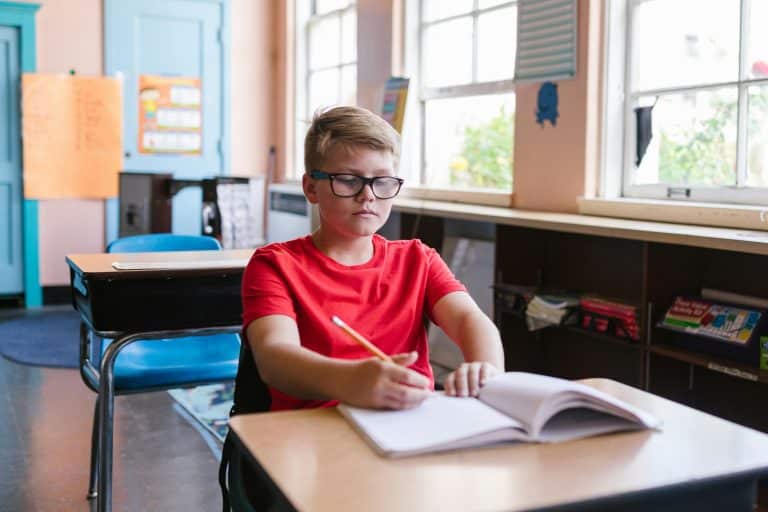As students navigate high school, prepare for higher education, and embark on their early careers, self-advocacy becomes an increasingly vital source of empowerment. At The Enrichery, we believe firmly in the value of goal-setting, problem-solving, and effective communication to help adolescents enter adulthood with the tools they need to succeed.
What is Self-Advocacy?
Simply put, self-advocacy is the ability to communicate your needs and speak up for yourself.
In academic settings, students who struggle with self-advocacy may find it difficult to ask their teachers for help in front of their peers. They may feel uncomfortable admitting a lack of understanding, leading to a reluctance to request after-school tutorials or other forms of academic assistance.
Outside the classroom, such students may refrain from asking their friends for emotional support through personal struggles and, in extreme cases, may find themselves unable to communicate harmful experiences, like bullying or abuse, to a responsible adult. Although today’s article focuses primarily on self-advocacy in school, such skills are often transferable to personal and professional contexts alike.
The Importance of Goal-Setting
Identifying and setting goals can ground students against the stress of academics.
Another way of looking at it is: when you know what you want, it becomes easier to pinpoint what might be preventing you from achieving it. For example, if a student knows they want to receive all As in a given semester, they will feel more inclined to seek support to improve their B in English.
Of course, this dynamic is not exclusive to the classroom. A runner who wishes to improve their performance (say, by shaving 5 seconds off their mile time) will find it easier to put together an effective training plan with their coach than an athlete who has a vague desire to improve but is unsure of what they hope to achieve.
How to Know When to Seek Support
STEP 1: EXPLORE WHAT “FEELS OFF”
Self-advocacy begins with a feeling. A student may experience confusion during a lecture or disappointment about a grade received for an assignment. Outside the classroom, they may feel insecure about their resume or bored with their extracurricular hobbies. In their personal life, they may struggle with their mental health or a toxic relationship.
The potential for such feelings to turn into productive expressions of self-advocacy is why it is so important for parents to communicate openly with their children, encouraging them to self-reflect on their emotional well-being and helping them identify where something “feels off.” Rather than wallowing in despair, self-advocacy empowers teens to channel such feelings into specific, realistic opportunities to better their situations.
STEP 2: DIAGNOSE THE PROBLEM AREA
Once a feeling has been expressed, a parent should help their child identify the source of that discomfort. Here, it is important to be as specific as possible. For example, a student may have felt confused in class because their application of a mathematical concept did not yield correct results. That student in an unhealthy relationship may have felt coerced into behaving against their values out of fear of rejection (for more on the dangers of peer pressure, see here).
STEP 3: IDENTIFY SOURCES OF SUPPORT
From there, the parent and child together can brainstorm sources of support relevant to the problem. Oftentimes, this is a teacher, an on-campus counselor, or a coach. In some cases, a teen with a sparse resume may find it helpful to approach a professional in a field of interest. Of course, should a parent suspect that their child’s mental health issues are a particular cause for concern, involving a licensed therapist may be necessary.
STEP 4: BRAINSTORM EFFECTIVE SOLUTIONS
Lastly, and perhaps most importantly, a parent can help their child identify realistic solutions to their problem. Again, specificity is important, and, in some cases, more than one solution is appropriate. A student who received a poor grade on an assignment may consider requesting the opportunity to resubmit it with improvements, completing a related extra credit assignment, or forming a study group with peers in preparation for an upcoming exam on the same concept. Until a student has grown sufficiently accustomed to their teacher and classroom policies, offering multiple solutions demonstrates a strong commitment towards self-improvement.
Practicing Effective Communication
Once a specific problem area, source of support, and potential solution/s have been identified, a student should feel confident approaching that individual for assistance. This can take the form of a well-crafted email or an in-person interaction. Either way, parents must help their child ensure they are approaching this person with due respect, self-assuredness, and managed expectations.
Promoting self-advocacy is a big part of what we do at The Enrichery. Through our Academic Coaching and Executive Functioning sessions, we help our students identify problem areas and brainstorm effective solutions, including, if necessary, helping students draft emails to teachers. Sessions are available for students of all ages and levels throughout the year. For more information, submit a request to contact us at https://theenrichery.com/contact-us-submission/!





